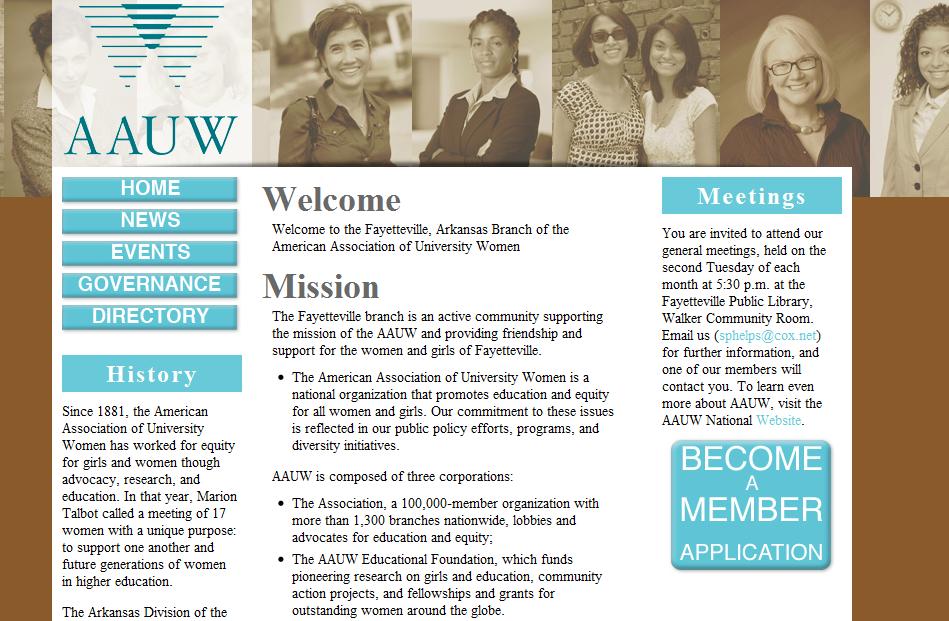Your cart is currently empty!

Making a Website for a Nonprofit Organization
Last night Jon Schleuss and I presented the new website we built for the local chapter of the American Association of University Women. This excellent organization has been supporting equity for women for more than a century, and we were glad to have the opportunity to create their new site.
We showed them which pages they could change themselves, which ones had to have changes made by the webmaster, how to use the blog and the calendar.
The experience brought out some of the differences between working with businesses and working with other kinds of organizations. Here are some things to keep in mind when you build a website for your organization:
- There may be a lot of different responses. While workers in a business generally are invested in the success of the website, members of an organization may not be. Some of the members of the AAUW didn’t see the point of having a website at all. Others worried that the new functionality would interfere with the current methods of communication within the group. There were concerns that changes might offend the webmaster. It may be necessary to spend some time with the membership paving the way for changes.
- There might be too many cooks. During most of the creation of the website, there were only one or two people from the organization involved in decision-making. Once the site was up, there were suddenly dozens of decision makers. With other organizations, we’ve seen all decisions have to go through multiple committees, or be passed around informally for weeks waiting for consensus. The AAUW currently has a couple of empty pages. Jon expressed it by saying, “Rebecca and I have personal websites, but this is a website for your whole group, so it should reflect the whole group. We’re waiting for your input as a group, and as soon as you’ve decided what information you want there, we’ll add that.” My past experience is that members usually want changes after launch — no matter how much discussion there is ahead of time or how long the conversation is left open — so your organization may need to budget for the cost of making changes after completion.
- There may be rules. The AAUW has lots of rules, ranging from the way logos should be displayed to the punctuation of the content. Corporations sometimes have this sort of rule as well, but national organizations nearly always do. Whether to use “e-mail” or “email,” whether abbreviations and acronyms are allowed, and whether to use honorifics like “Ms” or “Dr.” are among the usage issues that often come up. The central site for the organization usually has these rules posted, though local members may be unaware of them. It’s worth checking for such rules and passing them on to your web designer and copywriter.
I’ve done web content for religious institutions, professional associations, community organizations, and nonprofit groups. Invariably, the benefits of the website are similar to those for businesses, in terms of improved communication, new members, and increased funds. The process may be a bit different, but it’s worth doing. In this case, the members of the local chapter are proud to say that their new website is the best branch website in their state. They’re right about that. Their new design expresses the lively, diverse, dedicated nature of their organization, and should help to bring the next generation of educated women into the group.
by

Leave a Reply